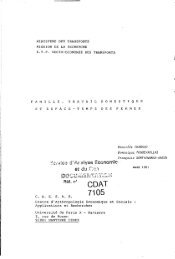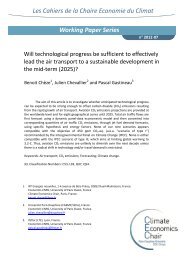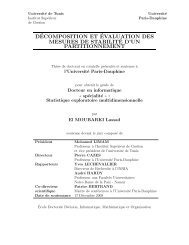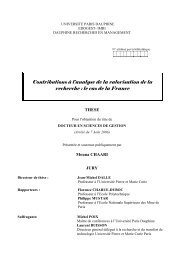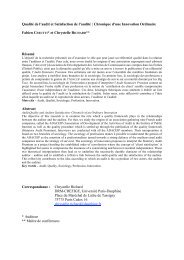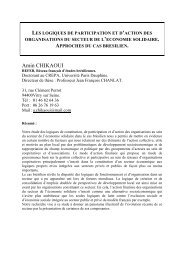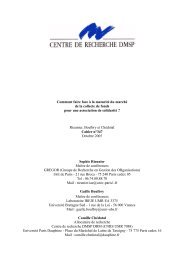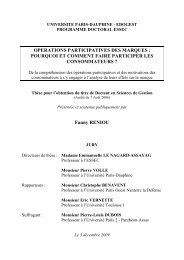TH`ESE Docteur de l'Université Paris-Dauphine Morgan HERVÉ ...
TH`ESE Docteur de l'Université Paris-Dauphine Morgan HERVÉ ...
TH`ESE Docteur de l'Université Paris-Dauphine Morgan HERVÉ ...
You also want an ePaper? Increase the reach of your titles
YUMPU automatically turns print PDFs into web optimized ePapers that Google loves.
alargelyover-allocatedmarket. Theover-supplyofallowancescomparedto<br />
<strong>de</strong>mand triggered a strong price correction (phase I price <strong>de</strong>creased by 64%<br />
between April 24th and May 2nd). On May 15th, the official release by the<br />
EC of aggregated emissions for the year 2005 did little to dissipate doubts<br />
over too large an emissions cap for Phase I. In April 2007 and 2008, the process<br />
was smoother and more streamlined to prevent similar major impact<br />
on market prices. The fact that market participants had no expectations of<br />
scenario reversal during phase I also helped.<br />
As regards the use of Kyoto offsets in phase I of the European scheme,<br />
the European so-called ”linking directive” (which was adopted in 2004) permits<br />
the use of CDM offsets for compliance purpose. The use in phase I is<br />
theoretically unrestricted (i.e. compliance could be achieved by surren<strong>de</strong>ring<br />
solely Kyoto offsets). Nevertheless, this was prevented by (1) the long<br />
wait to have the ITL (Kyoto registry) operational (which only happened in<br />
late 2007), (2) the practical constraint to have the CITL (EU ETS registry)<br />
connected to the ITL. Initially scheduled for April 2007 (Alberola and <strong>de</strong><br />
Dominicis, 2006 [5]), the connection was <strong>de</strong>layed to October 2007 and then<br />
to December 2007 2 . Afterwards it was obvious that no CERs would be<br />
available for use in the EU ETS during phase I.<br />
Banking opportunities for unused allowances from phase I to II, initially<br />
very limited to France and Poland only, were ren<strong>de</strong>red unattractive by EC<br />
<strong>de</strong>cisions on several NAPs for phase II in October-November 2006. In short,<br />
any allowance carried forward to phase II would <strong>de</strong>crease the member state’s<br />
corresponding NAP II emissions cap. This triggered a price disconnect between<br />
phase I EUA price and that of phase II. The i<strong>de</strong>a behind this EC<br />
move was to prevent that phase I excess allowances would be carried forward<br />
towards phase II which would have un<strong>de</strong>rmined the constraint of the<br />
scheme.<br />
Figure 1.1 <strong>de</strong>picts the evolution of the price of the Phase I EUA over its<br />
lifetime. We see the price shock that occurred during the first ”true-up”<br />
event and the price disconnect that ensued. Nevertheless, apart from those<br />
major price shocks, the price of the EUA respon<strong>de</strong>d to market fundamentals,<br />
that is information regarding the supply of allowances (NAPs) and<br />
<strong>de</strong>mand for emissions (industrial activity, the relative price of gas and coal,<br />
temperature and precipitation data, etc.).<br />
2 According to the UNFCCC secretariat (reported in Tendances Carbone, 2007, [6]).<br />
12



